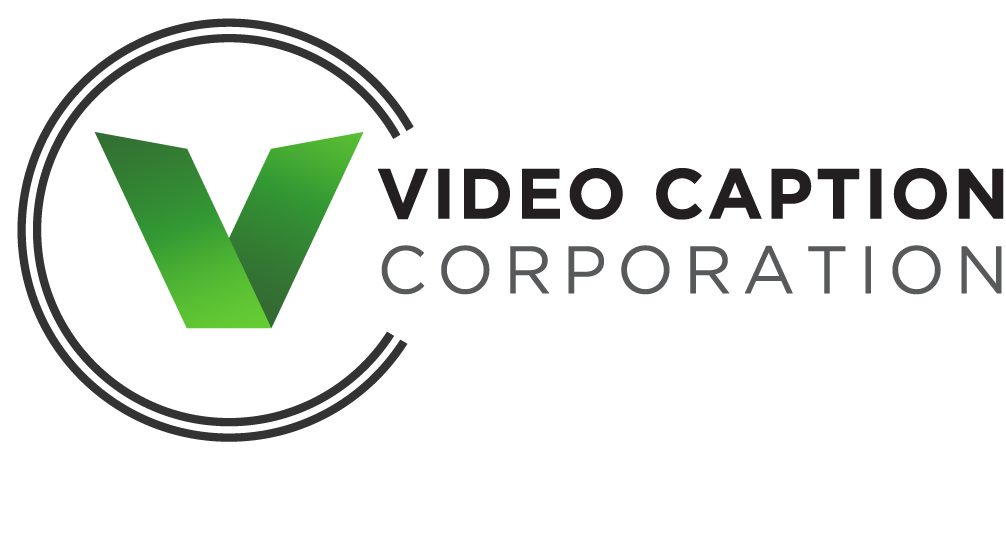When it comes to producing strong video content, one fundamental rule applies: Show, don’t tell. This doesn’t mean eliminating dialog entirely. Spoken words are necessary to drive narratives, convey information, and provide context to help the audience enjoy the full experience that the video is intended to provide.
But what if spoken words aren’t clearly understood by the audience? What if the viewer of the video is hearing-impaired? The answer to these questions lies in a service called closed captioning.
Not to be confused with subtitles, which translate the language being spoken in the video into the language of the viewer, closed captioning in America is an English to English process. In its most basic form closed captioning allows hearing impaired viewers to see what is being spoken in the video as written words that appear at the bottom of the screen. Unfortunately, there is much more to it than that. And while well meaning video content producers who take this simplistic “let’s just put the words on the screen” approach to captioning may think that this tactic is ‘close enough’ to get the point across to a hearing impaired audience, the fact is that close just isn’t good enough.
The Need For Accurate Captioning
Hearing words and reading words are two different experiences. And the challenge for companies offering video captioning services is to make sure that the video captioning they provide is as accurate as possible in order to help hearing impaired viewers grasp, not just the spoken words themselves, but the tone, intent and emotion behind those words’ nuances that the healthy ear naturally detects. Accurate captioning delivers a broader, deeper and ultimately more satisfying experience to hearing challenged viewers.
Inaccurate captioning can be very frustrating to hearing impaired viewers, especially when the captioned words they read don’t accurately portray and support what they are seeing. This is especially true of YouTube video content or other content that is often captioned by automated captioning software.
Lacking the human touch needed to register emotion, context or word emphasis, automated captioning services at best provide a flat experience for the viewer. They can also get things very wrong. Marlee Matlin, the Oscar-winning actress who is hearing impaired, once said, ‘I rely on closed captioning to tell me the entire story.’ She went on to say that, ‘I constantly spot mistakes in the closed-captions. Words are missing or something just doesn’t make sense.’
A quick Internet search will reveal a host of machine generated ‘Closed Captioning Fails’ that offended audiences and embarrassed video producers.
Although these complaints are primarily directed at captioning problems associated with the online streaming of commercial theatrical videos, the same need for accuracy readily applies to all types of video content.
The Benefits of Accurate Captioning
Along with enhancing the overall viewing experience of a hearing impaired audience, there are other benefits of accurate closed captioning that all producers of video content should consider.
- Boosting Views and SEO Rankings – According to recent studies conducted by Discovery Digital Networks, a producer of digital programming and an independent division of Discovery Communications, http://discoverydigitalnetworks.com/, adding closed captions and transcripts to video content increases search traffic, page views, and engagement significantly. In addition, captions have been shown to increase SEO rankings and improve keyword density and diversity. Simply stated, closed captioning makes it easier for people to find online video content, which means more viewers.
- Greater Flexibility for Viewers – The mobile explosion allows viewers to access video content from anywhere and at anytime. And while closed captioning of videos viewed on mobile devices is of major benefit to the hearing impaired, it also allows people without compromised hearing the flexibility to view, comprehend and enjoy video content in all types of environments, including noisy ones such as airports, bars, health clubs, or in other situations where access to the audio is limited.
- Improved Comprehension and Retention – Closed captioning improves comprehension and retention of video content for all viewers, not just those that are hearing impaired. Closed captions help viewers comprehend dialog that is spoken very quickly or with accents or competing with background noise. In addition, video content that is instructional or otherwise rich with information, including terms, concepts and important names the viewer may not be familiar with, becomes easier to comprehend when captioning makes key points visual.
Technology is connecting and empowering today’s viewers of video content like never before, both hearing impaired and otherwise. Thanks to the Internet, the demand for video content has never been greater. At the same time, viewer expectations for quality content that engages, entertains, and is easy to fully comprehend have never been higher.
Producers of video content who recognize the value of accurate captioning and employ the services of closed captioning companies—companies that offer the human touch rather than automated captioning software to enrich the overall experience of both hearing and hearing impaired audiences alike—stand to gain greater competitive advantage and ROI going forward.


